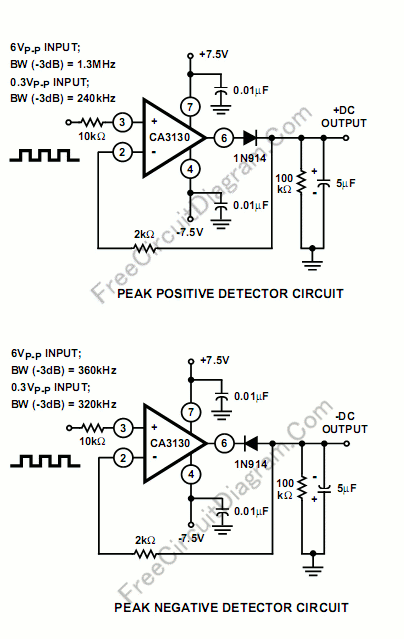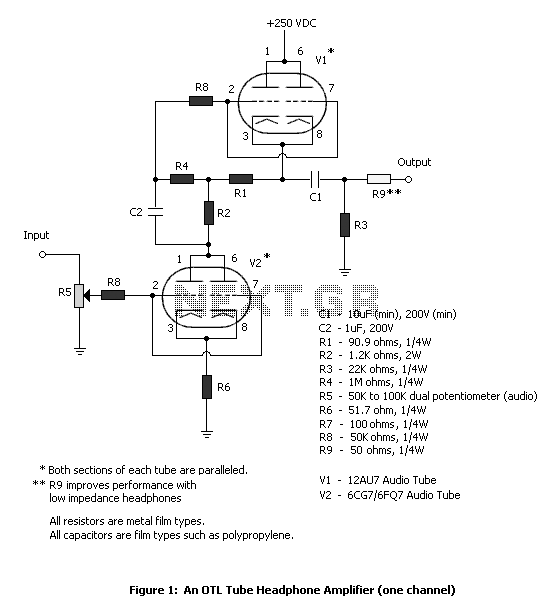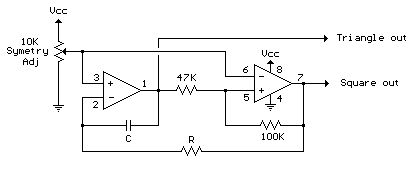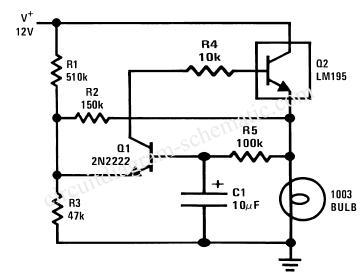
Transistor Turns Op Amp On Or Off
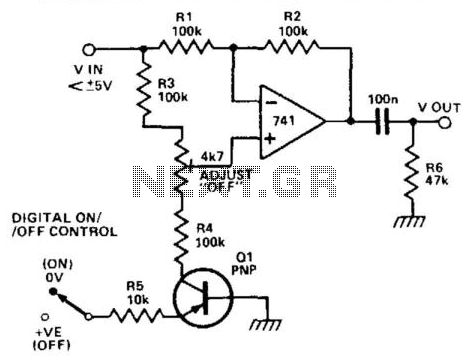
When transistor Q1 is switched off, the circuit operates as a voltage follower. By applying a positive voltage to the emitter of Q1 through a 10 kΩ resistor, the transistor is activated and enters saturation. Consequently, the lower end of resistor R4 is connected to ground. The circuit does not transform into a differential amplifier, as the voltage difference remains at 0 V. Provided that the resistor ratios in the two branches surrounding the operational amplifier are consistent, the output should remain at zero. A 47 kΩ resistor is utilized to correct any ratio discrepancies, ensuring that the off attenuation exceeds 60 dB. The high common-mode rejection ratio of the 741 operational amplifier facilitates this substantial attenuation.
In this circuit configuration, the operation of transistor Q1 is critical in determining the behavior of the overall system. When Q1 is off, it allows the circuit to function as a voltage follower, which is characterized by its ability to provide a high input impedance and a low output impedance. This configuration is beneficial for buffering signals, as it prevents loading effects on the preceding stage.
Upon applying a positive voltage to the emitter of Q1 via the 10 kΩ resistor, the transistor enters saturation, effectively pulling the lower end of resistor R4 to ground. This action alters the circuit's dynamics, but it is essential to note that the configuration remains stable, maintaining a voltage difference of 0 V across the operational amplifier's input terminals. The operational amplifier, in this case, is configured to operate in a differential mode, but due to the balanced resistor ratios in the two branches, the output remains at zero volts.
The inclusion of the 47 kΩ resistor serves a crucial role in nullifying any potential discrepancies in the resistor ratios. This adjustment is vital for maintaining the desired performance characteristics, particularly ensuring that the off attenuation remains above 60 dB. The high common-mode rejection ratio (CMRR) of the 741 operational amplifier is instrumental in achieving this level of attenuation. CMRR quantifies the amplifier's ability to reject common-mode signals, which is particularly advantageous in applications where noise and interference may be present.
Overall, this circuit exemplifies the principles of transistor operation and operational amplifier functionality, highlighting the importance of component selection and configuration in achieving desired electrical characteristics. When transistor Q1 is switched off, the circuit behaves as a voltage follower. By applying a positive vol tage to the emitter of Q1 via a 10 KOhmhm resistor, the transistor is made to turn on and go into saturation. Thus, the lower end of R4 is connected to ground. The circuit has not changed into that of a differential amplifier, except that the voltage difference is always 0 V.
As long as the resistor ratios in the two branches around the op amp are in the same ratio, the output should be zero. A 47-KOhm resistor is used to null out any ratio errors so that the off attenuation is more than 60 dB.
The high common-mode rejection ratio of a 741 enables this large attenuation to be obtained. 🔗 External reference
In this circuit configuration, the operation of transistor Q1 is critical in determining the behavior of the overall system. When Q1 is off, it allows the circuit to function as a voltage follower, which is characterized by its ability to provide a high input impedance and a low output impedance. This configuration is beneficial for buffering signals, as it prevents loading effects on the preceding stage.
Upon applying a positive voltage to the emitter of Q1 via the 10 kΩ resistor, the transistor enters saturation, effectively pulling the lower end of resistor R4 to ground. This action alters the circuit's dynamics, but it is essential to note that the configuration remains stable, maintaining a voltage difference of 0 V across the operational amplifier's input terminals. The operational amplifier, in this case, is configured to operate in a differential mode, but due to the balanced resistor ratios in the two branches, the output remains at zero volts.
The inclusion of the 47 kΩ resistor serves a crucial role in nullifying any potential discrepancies in the resistor ratios. This adjustment is vital for maintaining the desired performance characteristics, particularly ensuring that the off attenuation remains above 60 dB. The high common-mode rejection ratio (CMRR) of the 741 operational amplifier is instrumental in achieving this level of attenuation. CMRR quantifies the amplifier's ability to reject common-mode signals, which is particularly advantageous in applications where noise and interference may be present.
Overall, this circuit exemplifies the principles of transistor operation and operational amplifier functionality, highlighting the importance of component selection and configuration in achieving desired electrical characteristics. When transistor Q1 is switched off, the circuit behaves as a voltage follower. By applying a positive vol tage to the emitter of Q1 via a 10 KOhmhm resistor, the transistor is made to turn on and go into saturation. Thus, the lower end of R4 is connected to ground. The circuit has not changed into that of a differential amplifier, except that the voltage difference is always 0 V.
As long as the resistor ratios in the two branches around the op amp are in the same ratio, the output should be zero. A 47-KOhm resistor is used to null out any ratio errors so that the off attenuation is more than 60 dB.
The high common-mode rejection ratio of a 741 enables this large attenuation to be obtained. 🔗 External reference
Warning: include(partials/cookie-banner.php): Failed to open stream: Permission denied in /var/www/html/nextgr/view-circuit.php on line 713
Warning: include(): Failed opening 'partials/cookie-banner.php' for inclusion (include_path='.:/usr/share/php') in /var/www/html/nextgr/view-circuit.php on line 713
